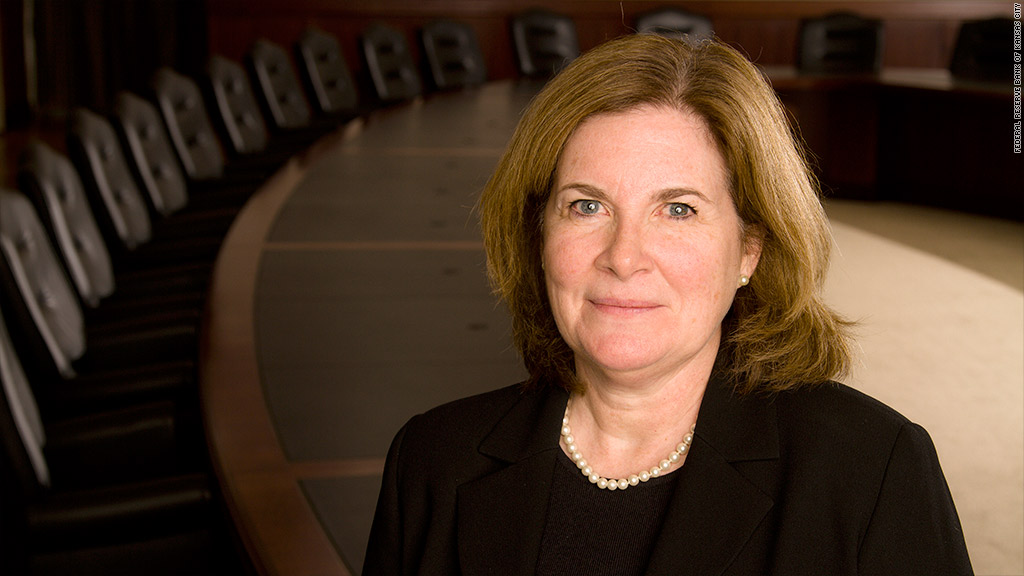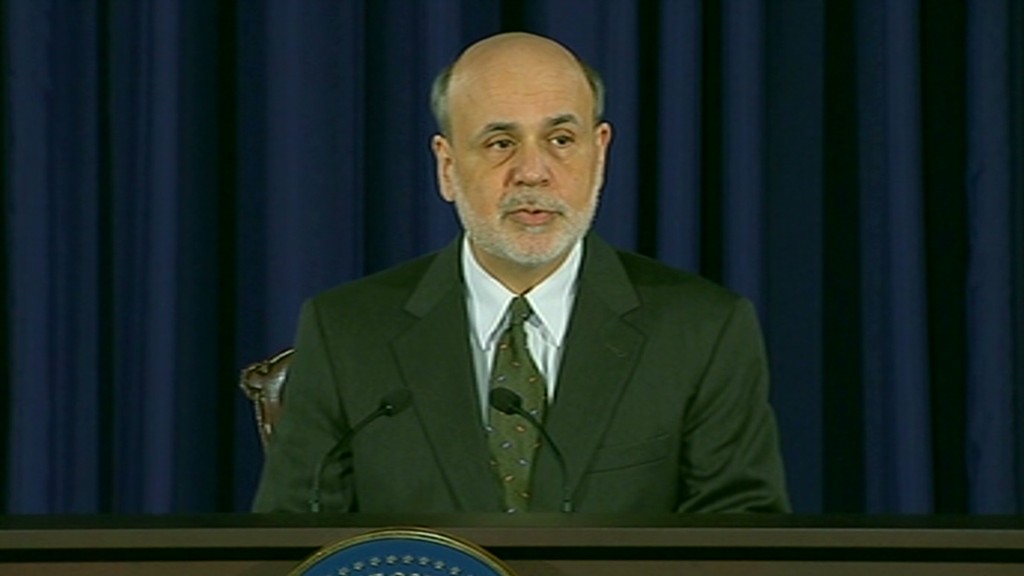
The economy is improving, and now is the time for the Federal Reserve to start weaning the economy back off stimulus, according to one central bank policymaker.
"In my view, we are on a steady and sustainable growth path," said Kansas City Fed President Esther George at a conference on Tuesday. George pointed to improvement in the job market and housing sector as reasons why the U.S. economy requires no further bond-buying from the Fed.
George hasn't been afraid to disagree with her colleagues on the Federal Open Market Committee, who set Fed policy. She has dissented at every central bank meeting this year, urging her colleagues to slowly back away from their current bond-buying policy.
"I would like to see the FOMC systematically reduce the pace of purchases, in a manner that would bring the program to an end in the first half of next year," she said.
The Fed is currently engaged in a policy known as quantitative easing, or QE3, in which it buys $85 billion a month in Treasuries and mortgage-backed securities. Buying these bonds is intended to lower long-term interest rates, and thereby stimulate the economy above-and-beyond the low short-term interest rates set by the Fed in December 2008.
Related: 'About half' of Fed officials want QE3 to end this year
To back up her view, George cited her colleagues' own forecasts, which have recently become more optimistic. Last September, Fed officials projected the unemployment rate would fall to 7.75% by the end of 2013.
But as of the June meeting, they now believe it will fall to around 7.25% by that time. (It was 7.6% as of June.)
"Projections of FOMC members suggest that there's more confidence, on average, about improvement for the labor market," George said, adding that throughout history, the Fed has often been overly pessimistic about the unemployment rate.
George nodded to increased volatility in interest rates as an inevitable consequence, as the Fed starts tapering QE3, but also said she believes the "economy is positioned to benefit from higher long-term interest rates."
Related: Ben Bernanke's power over your money
She pointed to retirees and savers as an example. Over time, they will "begin to realize improved returns," she said.
In addition to QE3, the Fed has said it plans to keep short-term rates exceptionally low until the unemployment rate falls below 6.5%, or annual inflation exceeds 2.5% -- a scenario that it predicts is unlikely to occur until at least 2015.

Fed Chairman Ben Bernanke and others have stressed that those numbers are more like guidelines than set-in-stone rules, but George clearly disagrees once again with her colleagues. She would prefer the Fed to commit to a specific economic number as a trigger for monetary policy.
"Thresholds should act like triggers," she said. Thresholds have the "potential to perpetuate uncertainty," whereas a "trigger provides more certainty to the public," she said.
George also repeated her concern that low interest rates could lead investors to take "destabilizing" risks, but fell short of calling an actual bubble.
"Are there bubbles? I don't know," she said. "I don't know how to call a bubble."


